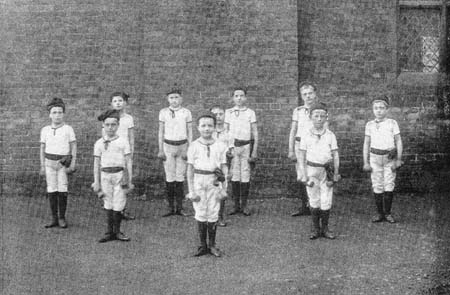Bersted Home For Boys, Bognor
Bersted Home For Boys, BognorNewtown, Bognor, Sussex (1892 - 1907) Although this home was only formally transferred into the care of the Waifs and Strays' Society in 1892, the Home had been linked to the work of the Society for several years. In fact, the first 17 children that Bersted had received in 1890, were sent there by the Society. When it was transferred there were 40 children within Bersted, and the premises were extensive. Formerly a builder's yard, the spacious workshops had been converted into schoolrooms, dormitories and play areas. There were additional bedrooms in two adjoining cottages, and a drill hall had been built which was capable of seating four hundred people. Owing to its size there were many members of staff, but the most important were the Superintendent and the Matron, who looked after the everyday affairs. Bersted housed boys aged 8-14, and it was seen as the first step on the 'Working-Boys' Ladder.' The boys came from very deprived backgrounds, as orphans or as abandoned children living on the streets. Bersted's role was to provide these children with the care and the education required, so that they could lead an independent, working life as adults. After leaving Bersted at 15, the boys would move to the Jersey Home for Working Lads. This was an independent home, which housed the boys whilst they were working. Bersted Home placed particular emphasis on military discipline, and the boys would dress as 'little sailor laddies' to perform drills. They also formed a military band, taking part in processions and entertainments. Physical welfare was important and Bersted owned a large gymnasium, which doubled as a singing hall. It also seems that the boys were fed very heartily - one visitor noted the 'vast amounts of roast beef and plum-pudding, with oranges, apples, nuts, and figs, washed down with lemonade.' The number of boys in Bognor remained relatively consistent throughout its life, peaking at 47 in 1900. The Home closed in 1908, and the boys were all moved to new premises at Sampford Peverell, Tiverton. |




